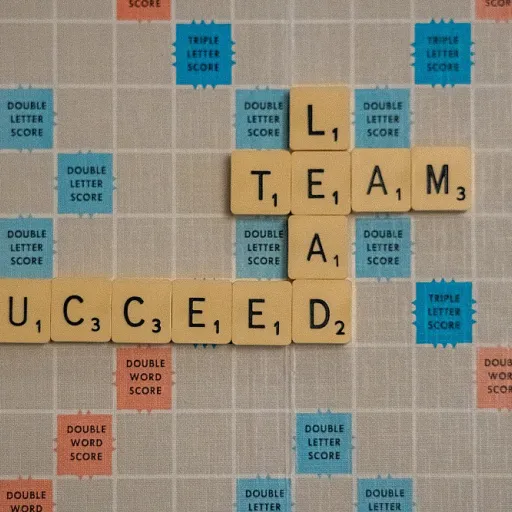
Understanding the role of a drafter in recruitment process outsourcing
What Does a Drafter Do in Recruitment Process Outsourcing?
In the context of recruitment process outsourcing (RPO), the drafter plays a crucial role in shaping the hiring journey. This professional is responsible for creating, organizing, and maintaining structured documentation throughout the recruitment process. Their work ensures that every stage—from initial candidate screening to final onboarding—remains clear, compliant, and efficient.
Drafting in RPO is not just about paperwork. It involves preparing interview feedback forms, standardizing evaluation criteria, and supporting hiring managers with effective feedback collection tools. By doing so, drafters help interviewers capture relevant feedback and areas for improvement, making the interview process more transparent and fair for all candidates.
- Feedback forms: Drafters design and update forms that guide interviewers in assessing both technical and soft skills, ensuring that feedback is constructive and actionable.
- Process documentation: They outline best practices for interviews, feedback, and evaluation, supporting continuous improvement and consistency across hiring teams.
- Candidate experience: By streamlining forms and feedback, drafters help create a positive candidate experience, reducing confusion and delays in the hiring process.
- Paper free solutions: Modern drafters often implement digital forms, making feedback collection more efficient and accessible for distributed teams.
Understanding the drafter’s responsibilities is essential for anyone involved in RPO. Their work underpins the effectiveness of interviews, the quality of feedback, and the overall success of the recruitment process. For a deeper look at how structured documentation supports pre-screening and interview stages, you can explore this resource on the pre-screening job interview process.
Key elements to include in a drafter interview feedback form
Essential Components for a Structured Drafter Interview Feedback Form
Creating an effective drafter interview feedback form is crucial for maintaining a fair and transparent recruitment process. The form should guide interviewers to provide structured, actionable, and constructive feedback, ensuring a positive candidate experience and supporting continuous improvement in hiring practices. Below are the key elements to include for best results:
- Candidate Information: Basic details such as name, interview date, and position applied for help keep feedback forms organized and accessible throughout the hiring process.
- Role-Specific Skills Assessment: Include targeted questions that evaluate the drafter’s technical skills, such as proficiency with drafting software, understanding of industry standards, and ability to interpret technical documents. Use a mix of rating scales and open-ended questions for a balanced evaluation.
- Soft Skills Evaluation: Assess communication, teamwork, adaptability, and problem-solving abilities. These areas are vital for onboarding and long-term success, not just technical fit.
- Structured Interview Questions: Standardized questions help interviewers compare candidates objectively and reduce bias. This approach supports consistency and fairness in candidate evaluation. For more on standardization, see the role of standardization in recruitment process outsourcing.
- Areas for Improvement: Provide space for interviewers to note specific feedback on where candidates can improve. Constructive feedback is valuable for both hiring managers and candidates, supporting continuous improvement in the interview process.
- Overall Recommendation: A clear section for interviewers to indicate whether the candidate should move forward in the hiring process, along with supporting reasons, helps hiring managers make informed decisions.
- Feedback Collection and Collaboration: Design the form to facilitate easy sharing and discussion among recruitment teams and clients, supporting collaborative hiring decisions and a paper free workflow.
By including these elements, your drafter interview feedback forms will support effective feedback collection, enhance the candidate experience, and drive best practices in recruitment process outsourcing. Remember, a well-structured form is not just a checklist—it’s a tool for continuous improvement and a more effective hiring process.
Balancing technical and soft skills assessment
Combining Technical and Soft Skills in Drafter Interviews
When designing an interview feedback form for a drafter in recruitment process outsourcing, it’s crucial to assess both technical and soft skills. Drafters play a key role in transforming requirements into actionable documents, so their abilities go beyond just technical know-how. A structured evaluation ensures that every candidate is measured fairly and consistently throughout the hiring process.
- Technical skills: Focus on the drafter’s proficiency with relevant software, understanding of industry standards, and ability to interpret complex instructions. Include interview questions that explore real-world scenarios or ask candidates to review sample documents. This helps interviewers gauge practical experience and problem-solving abilities.
- Soft skills: Communication, teamwork, and adaptability are just as important. Use the feedback form to capture insights on how candidates interact, respond to feedback, and handle constructive criticism. These qualities directly impact onboarding and collaboration with both recruitment teams and clients.
Balancing these two areas in your feedback forms leads to more effective candidate evaluation. It also supports a positive candidate experience by ensuring that all aspects of the role are considered. For more on how sourcing and screening fit into the broader recruitment process, check out this white paper on the role of sourcing in recruitment process outsourcing.
By using a structured feedback collection approach, hiring managers and interviewers can identify both strengths and areas for improvement. This not only streamlines the hiring process but also supports continuous improvement and best practices in recruitment.
Ensuring consistency and fairness in candidate evaluation
Building a Fair and Consistent Interview Evaluation
Consistency and fairness are at the heart of effective drafter interview feedback forms in recruitment process outsourcing. When interviewers use structured forms, it helps ensure every candidate is evaluated on the same criteria, reducing bias and improving the overall hiring process. This not only benefits the candidates but also supports hiring managers and recruitment teams in making informed decisions.
- Standardized Questions: Use the same set of interview questions for all drafter candidates. This creates a level playing field and makes it easier to compare skills and experience across interviews.
- Clear Evaluation Criteria: Define what good performance looks like for each skill or competency. For example, when assessing technical skills or soft skills, provide specific descriptions or rating scales in the feedback form. This helps interviewers give constructive feedback and identify areas for improvement.
- Objective Scoring: Use numerical ratings or checklists instead of open-ended comments alone. Structured forms reduce the risk of subjective judgments and support a more data-driven recruitment process.
- Feedback Collection Best Practices: Encourage interviewers to provide evidence-based feedback, referencing specific examples from the interview. This not only improves the quality of feedback but also enhances the candidate experience and onboarding process.
Regular calibration sessions among interviewers can further align expectations and interpretations of the feedback form. This step ensures that all team members understand the evaluation process and apply it consistently, which is essential for fair hiring and effective feedback collection.
Using digital, paper-free feedback forms also streamlines the process and makes it easier to track and analyze candidate evaluation data. This supports continuous improvement and helps recruitment teams identify trends or gaps in their hiring tech and interview process.
By focusing on these best practices, organizations can create a more equitable and transparent recruitment process, leading to better hiring outcomes and a stronger drafter talent pool.
Facilitating collaboration between recruitment teams and clients
Streamlining Communication for Better Outcomes
Collaboration between recruitment teams and clients is essential for a successful hiring process, especially when it comes to the drafter role. A well-designed interview feedback form can serve as a bridge, ensuring that all stakeholders are aligned on candidate evaluation and expectations. By using structured forms, both recruiters and hiring managers can share insights, highlight areas for improvement, and provide constructive feedback in a consistent manner.
- Centralized feedback collection: Digital feedback forms make it easier to gather input from multiple interviewers, reducing the risk of lost or incomplete information. This paper free approach also speeds up the process and supports remote collaboration.
- Clear communication of evaluation criteria: When forms include specific interview questions and skills assessments, everyone involved in the recruitment process understands what is being measured. This clarity helps avoid misunderstandings and ensures candidates are evaluated fairly.
- Facilitating onboarding and next steps: Effective feedback forms not only capture candidate performance but also provide actionable insights for onboarding or further interviews. This supports a seamless candidate experience and helps hiring managers make informed decisions.
- Encouraging continuous improvement: Regularly reviewing feedback forms and the interview process with clients can uncover best practices and areas for improvement. This collaborative approach leads to more effective hiring and better outcomes for all parties.
Ultimately, structured feedback forms help recruitment teams and clients work together efficiently, ensuring that every drafter interview is evaluated with consistency and transparency. This approach not only improves the quality of hires but also enhances the overall candidate experience throughout the recruitment process.
Tips for continuous improvement of your feedback process
Encouraging Feedback Loops and Regular Review
To keep your drafter interview feedback forms effective, it’s essential to treat feedback collection as an ongoing process. Regularly review the forms and the feedback they generate, involving both interviewers and hiring managers. This not only helps identify areas improvement but also ensures the forms stay relevant as the drafter role evolves or as your recruitment process changes.
Leveraging Data for Process Refinement
Analyze the data gathered from completed feedback forms. Look for patterns in candidate evaluation, common gaps in skills, or recurring interview questions that may need updating. This structured approach helps you spot bottlenecks or inconsistencies in the hiring process, leading to more effective feedback and a better candidate experience. Consider using hiring tech solutions to make this analysis paper free and more efficient.
Involving Stakeholders for Best Practices
Invite input from all stakeholders—recruitment teams, hiring managers, and even candidates—when refining your feedback forms. Their experience can highlight what works and what doesn’t, ensuring the forms support both technical and soft skills assessment. This collaborative approach fosters transparency and trust in the recruitment process, ultimately supporting smoother onboarding for new hires.
Continuous Training for Interviewers
Provide regular training and updates for interviewers on how to use the feedback form effectively. This helps maintain consistency in evaluation and ensures constructive feedback is given. Training can also address any changes in the drafter role or interview process, keeping everyone aligned with current best practices.
Benchmarking and Staying Updated
Stay informed about industry standards and best practices by reviewing white paper resources and benchmarking your forms against those used by other organizations. Download white papers or case studies to understand how others are enhancing their interview feedback process. This proactive approach supports continuous improvement and keeps your recruitment process competitive.












